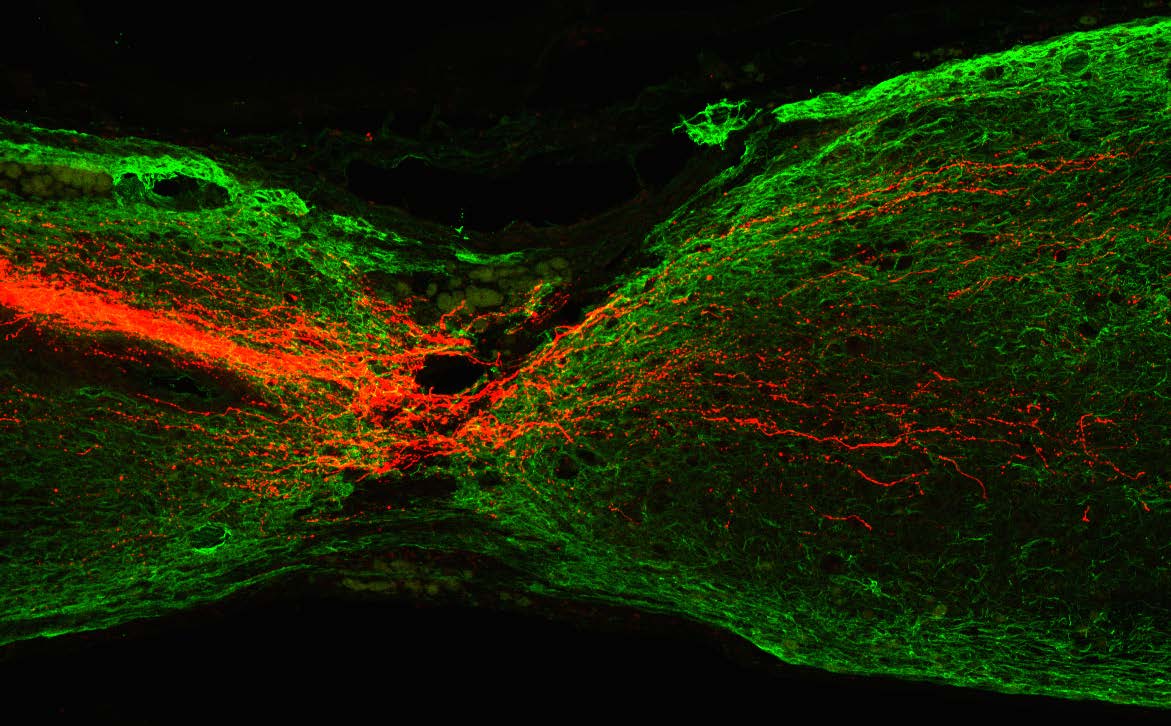Rewired Axons


Injuries to the central nervous system (CNS) can cause irreversible damage to nerve cells, manifesting in lowered mobility, sensation or even paralysis, and overall quality of life. Regeneration of neurons and their axons (long nerve fibers responsible for communicating information to different neurons), was believed to be very limited. However, scientists at HKUST have discovered methods to stimulate axonal regeneration of damaged neurons in mice, lending renewed hope in treating conditions such as spinal cord injuries.
Neuroscientist, Prof Kai Liu and his team, found that erasing the gene PTEN in mice with chronic spinal cord injuries activates yet another gene mTOR - the latter of which promotes axon regeneration. The first-time discovery was bolstered by a subsequent study by Prof Liu that elucidated the mechanism of neuronal activity enhancement through optogenetic (use of light to control cells) and chemogenetic (use of chemically engineered molecules to control cells) approaches.
A recent study led by Prof Liu revealed that skewing glycerolipid metabolism toward storage triglycerides impedes axon regrowth in injured neurons, while directing it toward phospholipid synthesis promotes the axon regeneration. Therefore, the inhibition of triglyceride synthesis or an increase in phospholipid synthesis can promote axonal regeneration. This research provides a new direction for the study of the axon regeneration in the CNS. The results provide additional explanation for the difference between the regeneration capacity of the central and peripheral nervous systems, and may be used to develop new translational targets for CNS injury.
Prof Kai Liu is Cheng Associate Professor of Science at the Division of Life Science at HKUST. He has published numerous papers in high impact journals such as Neuron, Science Advances, PNAS and Nature Neuroscience.